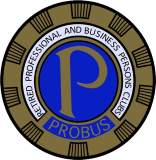LENTUNE PROBUS CLUB - January Meeting
Lentune Probus Club Meeting on 8 January 2024
Lentune Probus Club members met at South Lawn Hotel on 8th January.
The talk, entitled "The Corner Shop Killings" , gave rise to a fascinating number of questions and discussion points. Drinks in the bar and a delicious lunch followed.
Lentune Probus Club welcomes membership applications from gentlemen who would like to share our lively, fun, interesting meetings and social events. Contact Basil Jefferies, Club Secretary, on 07849 045127 for details.
The Corner Shop Killings.
We were treated to a riveting talk by Paul Stickler, a retired CID murder detective illustrating the difference between current practices and those which prevailed 100 years ago.
On 25th January 1919 the body of Elizabeth Ridgely was found brutally killed along with her dog in her corner shop in Hitchin.
For some extraordinary reason the local police superintendent decided that this was obviously an accident despite the murder weapon lying close to the body.
Fortunately, the chief constable was, unsurprisingly, unconvinced and called in Scotland Yard, however in the intervening period much of the scene of crime evidence had been cleaned up. Within a few days a local man, John Healey was arrested and charged with the crime. He had dog bites on his hands, was covered in blood, had no alibi and had been seen in the shop at the time of the assault. He also had a record of extreme violence although this was not known at the time.
Having considered their verdict for just 11 minutes Healey was acquitted by the jury at Hertfordshire Assizes!
This case fundamentally changed the way that murder investigations were conducted and the Home office insisted that in the future provincial forces must bring in the services of Scotland Yard’s murder squad in cases where the killer was not immediately known.
Paul explained that nowadays even 100 years after a crime a body of evidence can be built up to indicate a probable perpetrator. This includes newspaper cuttings, National Archives, local records offices and the personal backgrounds of all present at the time of the crime.
This applies even more today.
